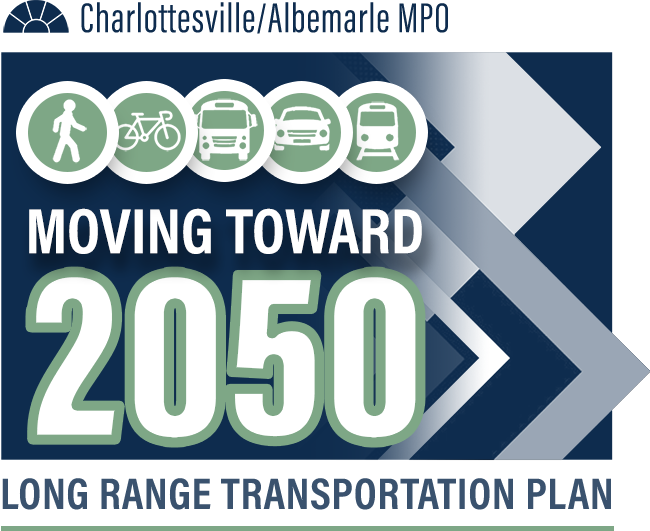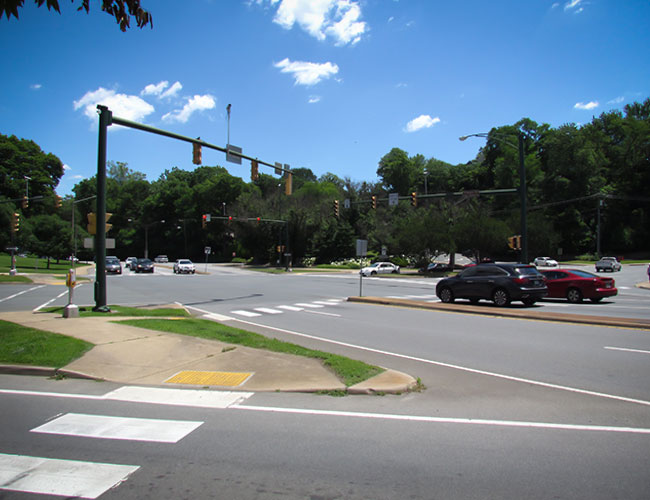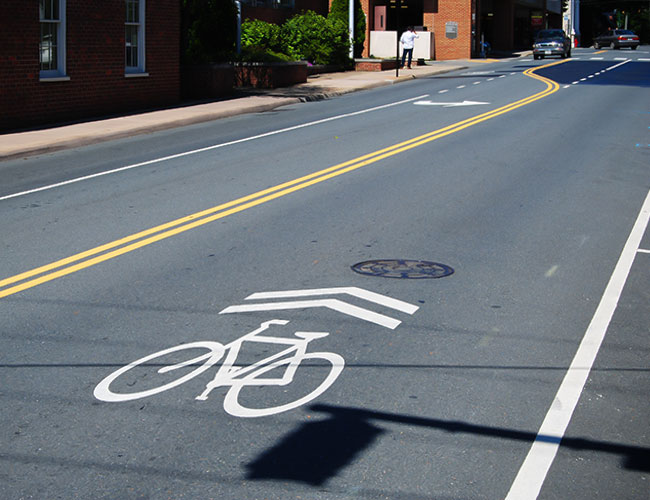
What is Moving Toward 2050?
Moving Toward 2050 is the federally-required long range transportation plan (LRTP) for the City of Charlottesville and urbanized portions of Albemarle County, which is the area served by the Charlottesville-Albemarle Metropolitan Planning Organization (CA-MPO). This plan identifies long range transportation needs, considers possible infrastructure improvements, and establishes priorities to implement projects based on anticipated funding.
Why should I care about the plan?
Transportation is essential to all of us. From jobs to goods to the people we care about and the places that bring us joy, transportation connects us to what we need.
The Moving Toward 2050 planning process works to address questions such as:
- Does the existing transportation system get you where you need and want to go safely and efficiently?
- Is there a need for better connected sidewalks or bike infrastructure?
Where are the biggest safety needs? - How can we best improve access to places where people need or want to go?
- How can we reduce the climate change impacts of the transportation system?
As a user of the transportation system, you are directly impacted by the decisions that are made around which infrastructure projects are pursued. Therefore, it is important that your opinions are reflected in determining how projects should be prioritized.


What does the plan do?
- The safety of the transportation system for all users
- Accessibility of jobs and opportunities of all modes, including accessibility for underserved populations
- Resiliency and climate change impacts of the transportation system
- Integrating transportation system improvements with land use planning and economic development
- System efficiency and reliability in arriving to destinations on-time
- Estimated project costs
The LRTP must cover a planning-horizon of at least 20 years and is updated every five years to reflect changes in demographics, land use, travel patterns, and growth projections. CA-MPO’s previous LRTP was adopted May 22, 2019 and used 2045 as its future planning year. This next LRTP will use a future planning year of 2050 and is scheduled to be presented to the Policy Board for adoption during its regular meeting in May 2024. The final outcome of this plan will be a list of prioritized projects based on estimated benefits relative to cost, recommended implementation strategies, and prioritized needs requiring further evaluation.
Why is Moving Toward 2050 important?
1. To be eligible for federal funding
Surface transportation projects must be identified in the long range transportation plan. This funding is a critical resource for implementing important transportation solutions in the region. Some recent examples of funded projects include:
2. Funding for transportation system improvements is limited
Since we don’t have funding to pursue every transportation project, we have to select the projects that are most critical to our region. This planning process is an opportunity for the region to define what is important when considering transportation infrastructure investments.
3. Funding for transportation system improvements is competitive
Funding allocations for transportation projects are based on competitive application processes. In order to successfully implement projects that will improve the transportation system for our region, we need to identify not just the projects that will meet the highest priority needs, but which projects have the best overall opportunity to meet critical system needs compared to their costs. The long range transportation plan facilitates a conversation about the best opportunities to leverage existing or potential funding sources to implement projects that have the most value for the region.
4. Transportation planning is an ongoing process
The process of identifying transportation system projects for consideration occurs in two steps. The first step is to identify where there is an existing system need. The second step is to determine what solutions are most appropriate to address that system need. Not every need that is identified in Moving Toward 2050 will have an identified solution. Those needs will indicate where additional planning studies are needed to develop those solutions, establishing an ongoing pipeline for developing implementable projects.
